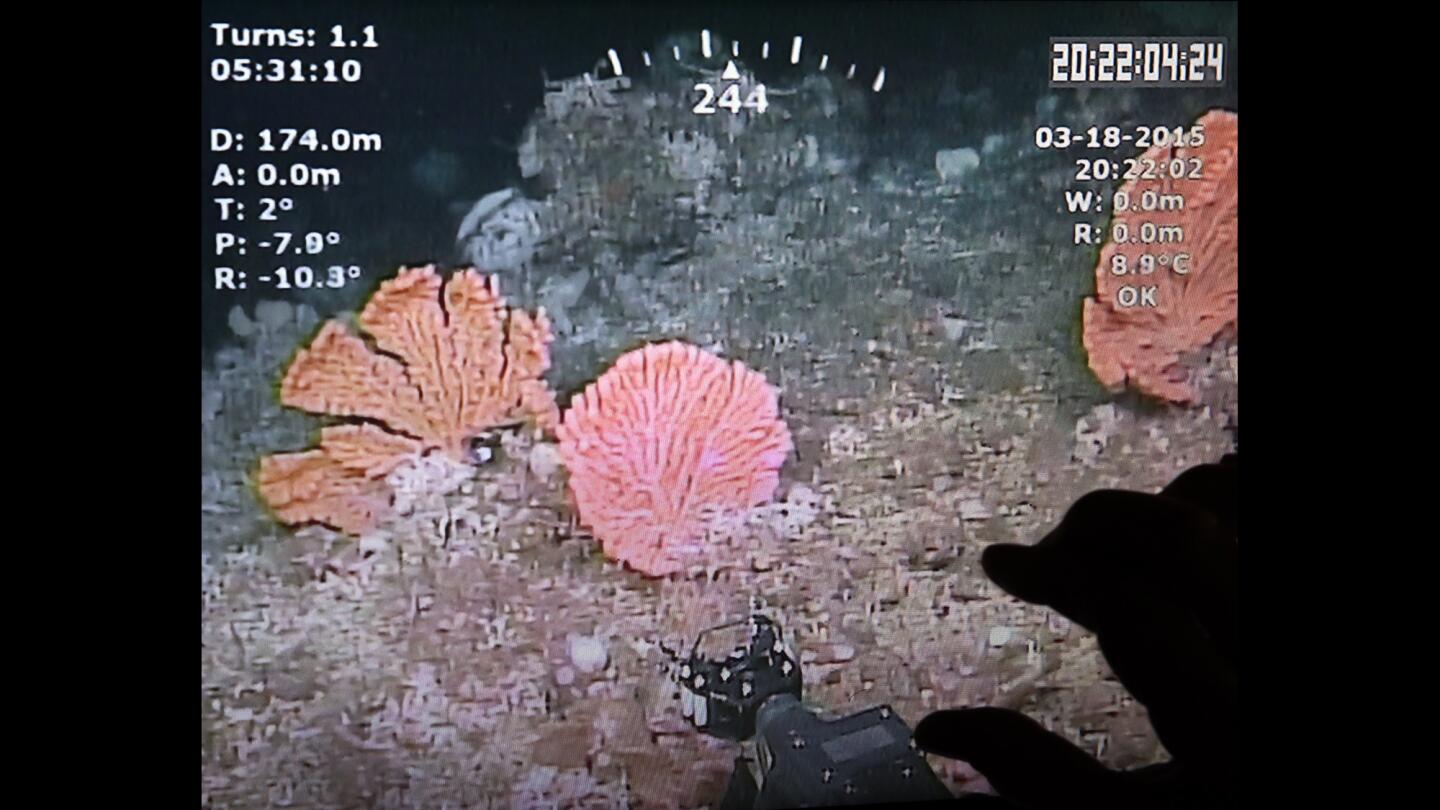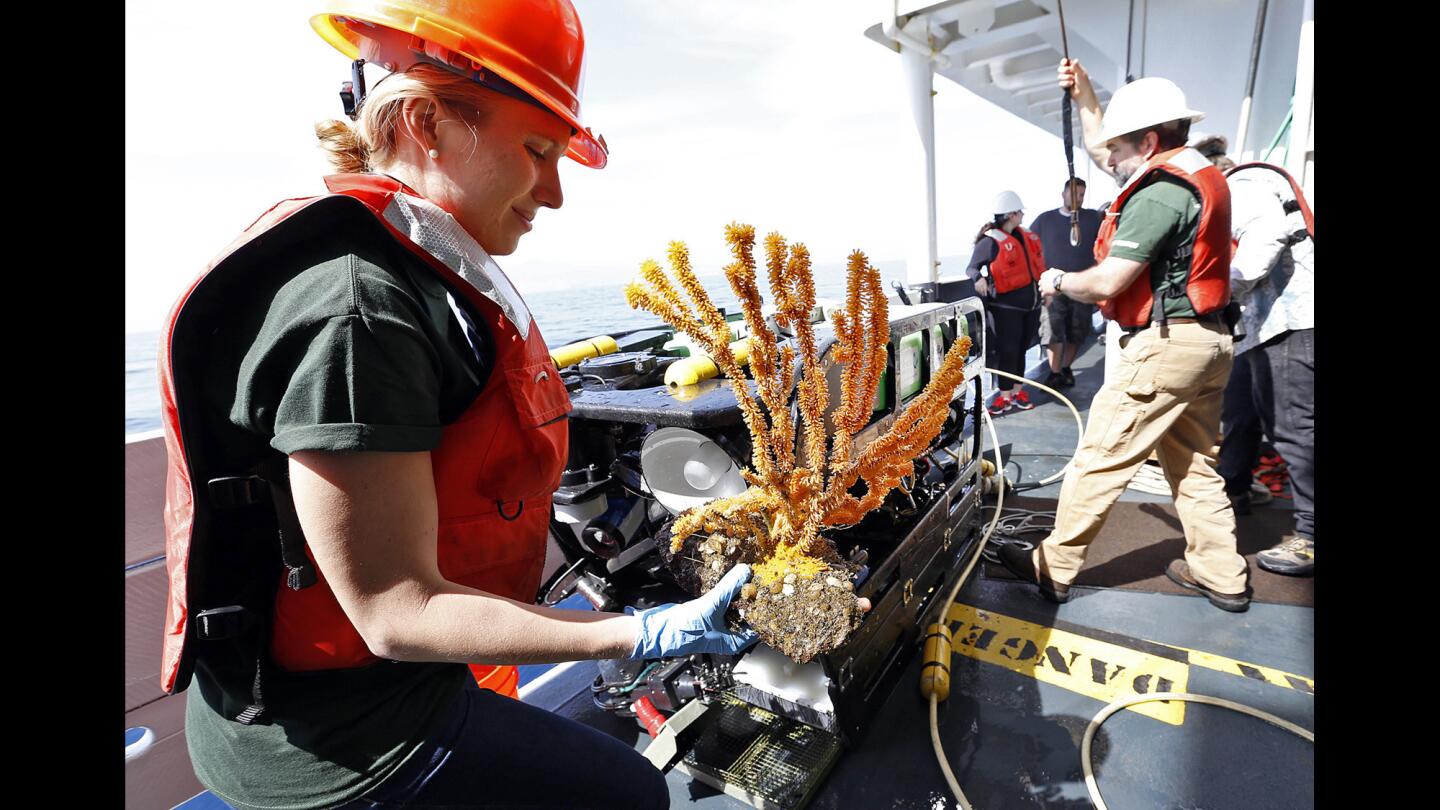
Marine biologist Leslie Wickes retrieves a sample of gold coral collected from the seafloor of the Channel Islands National Marine Sanctuary. (Al Seib / Los Angeles Times)
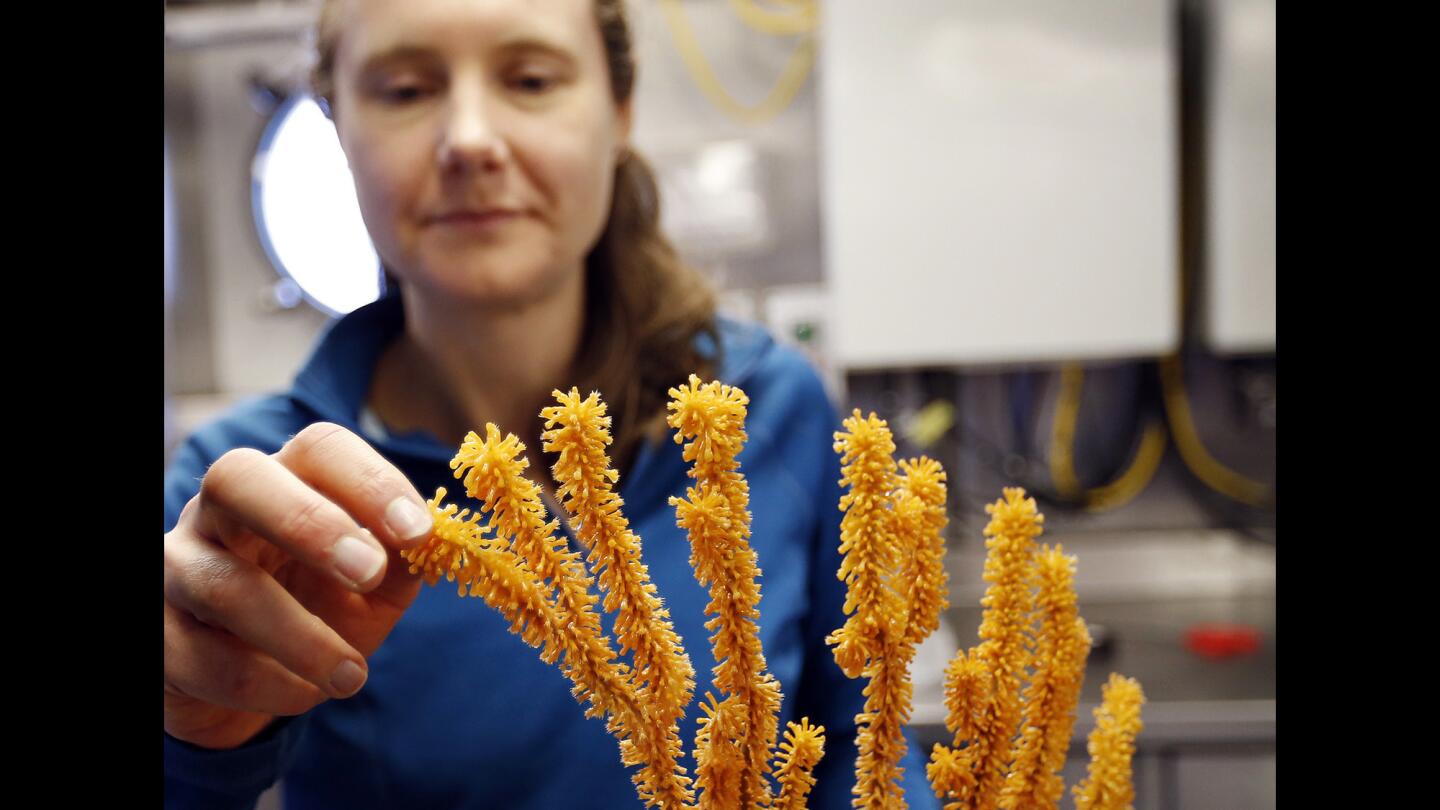
Branwen Williams, a professor at the Keck Science Department of the Claremont Colleges, examines a gold coral sample collected during the weeklong mission. (Al Seib / Los Angeles Times)
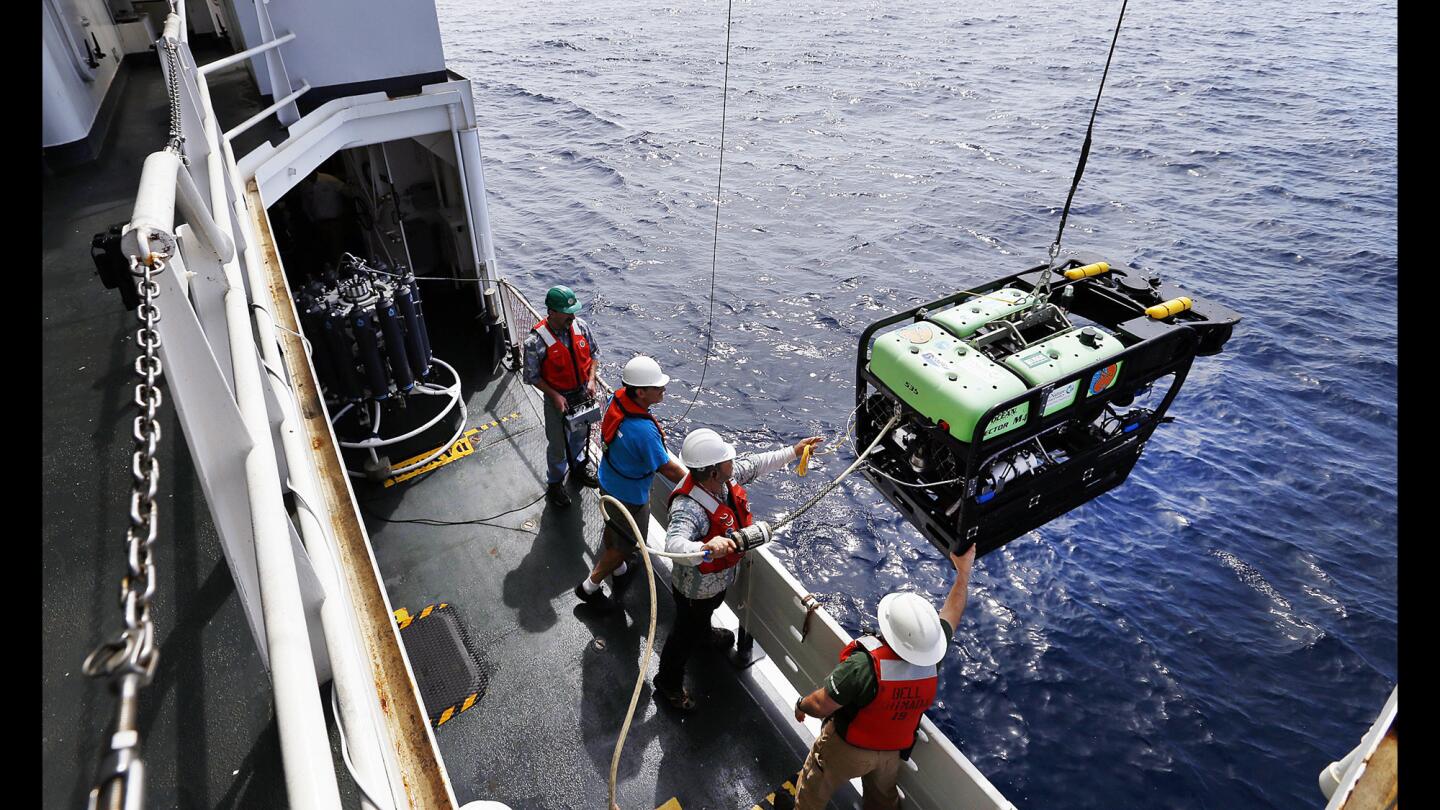
A remotely operated vehicle with cameras and manipulator arm is lowered into the water to look for coral samples in the marine sanctuary off Southern California. (Al Seib / Los Angeles Times)
Advertisement
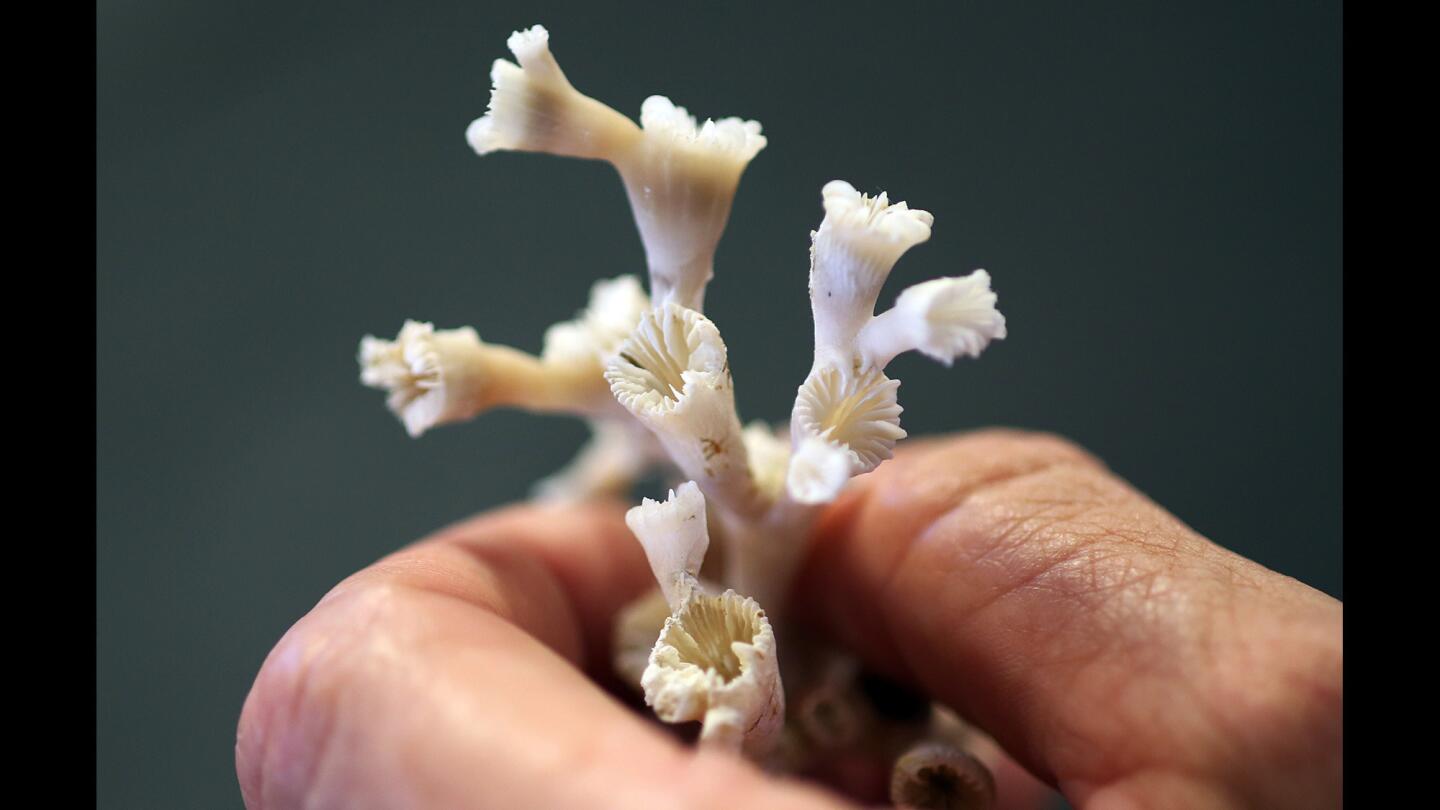
A piece of stony coral collected from the marine sanctuary seafloor. (Al Seib / Los Angeles Times)
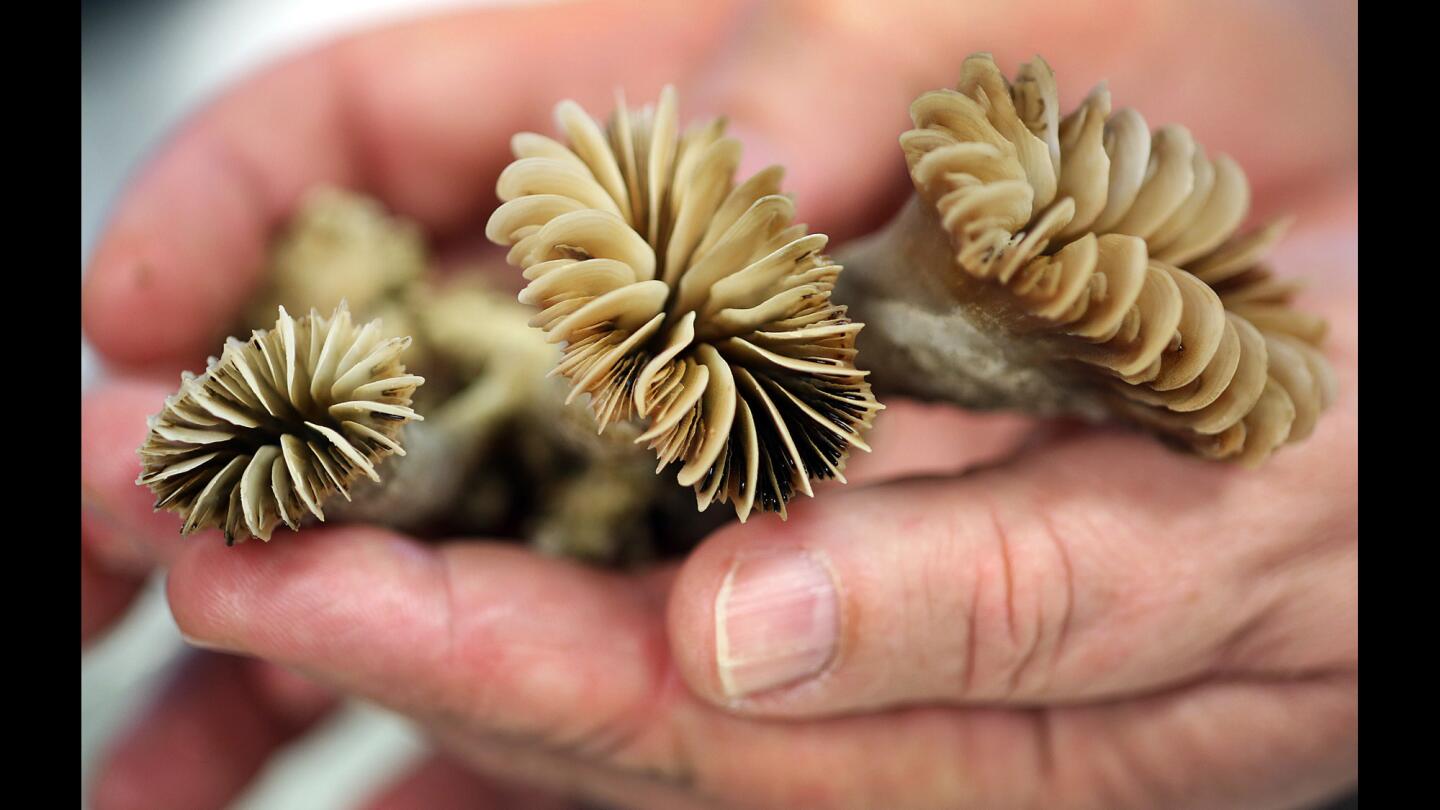
A Desmophyllum dianthus coral sample. (Al Seib / Los Angeles Times)
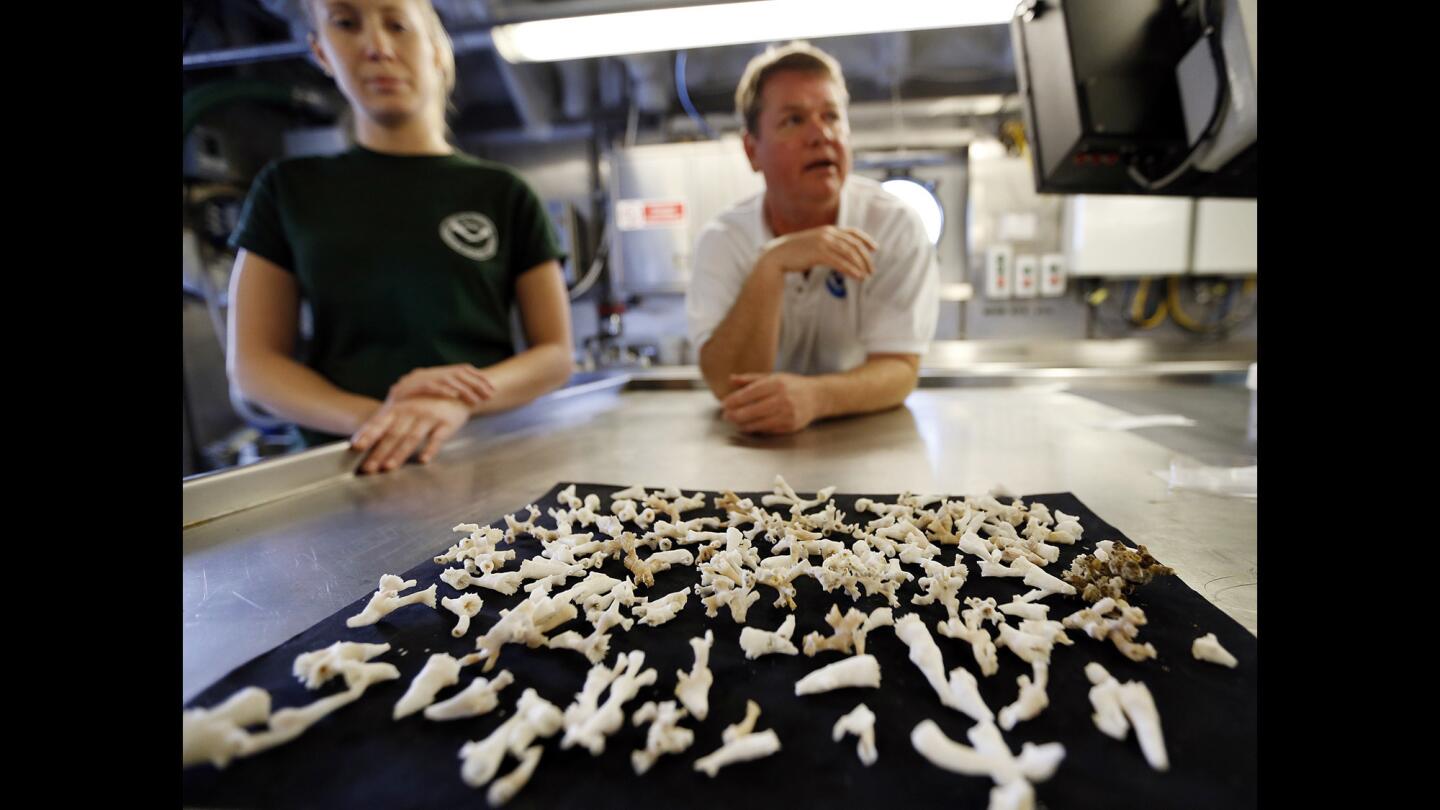
Marine biologists Leslie Wickes and Peter Etnoyer of the National Oceanic and Atmospheric Administration show a sampling of stony coral collected in the deep-sea mission. (Al Seib / Los Angeles Times)
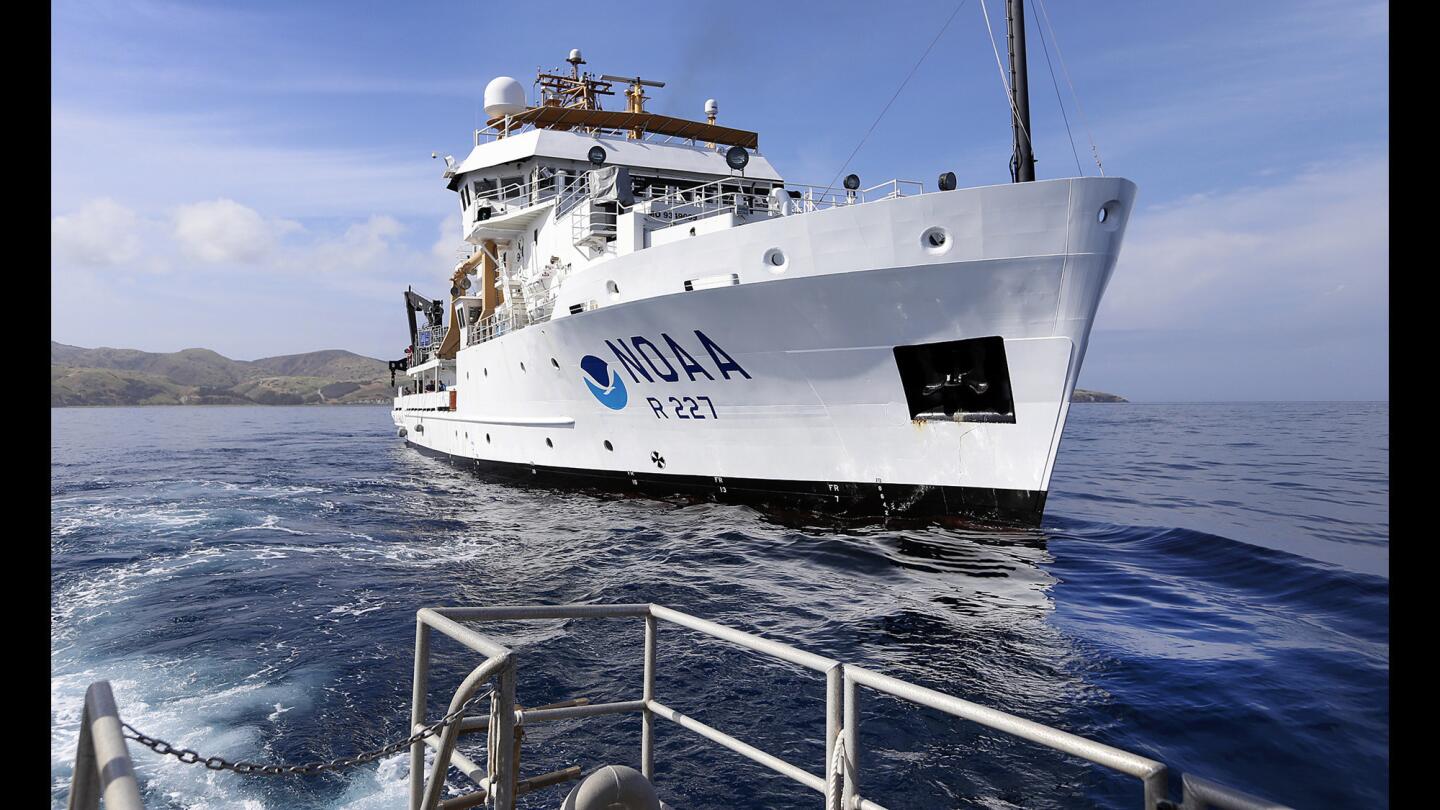
The NOAA-led mission aboard the research ship Bell M. Shimada heads away from Santa Cruz Island. (Al Seib / Los Angeles Times)
Advertisement
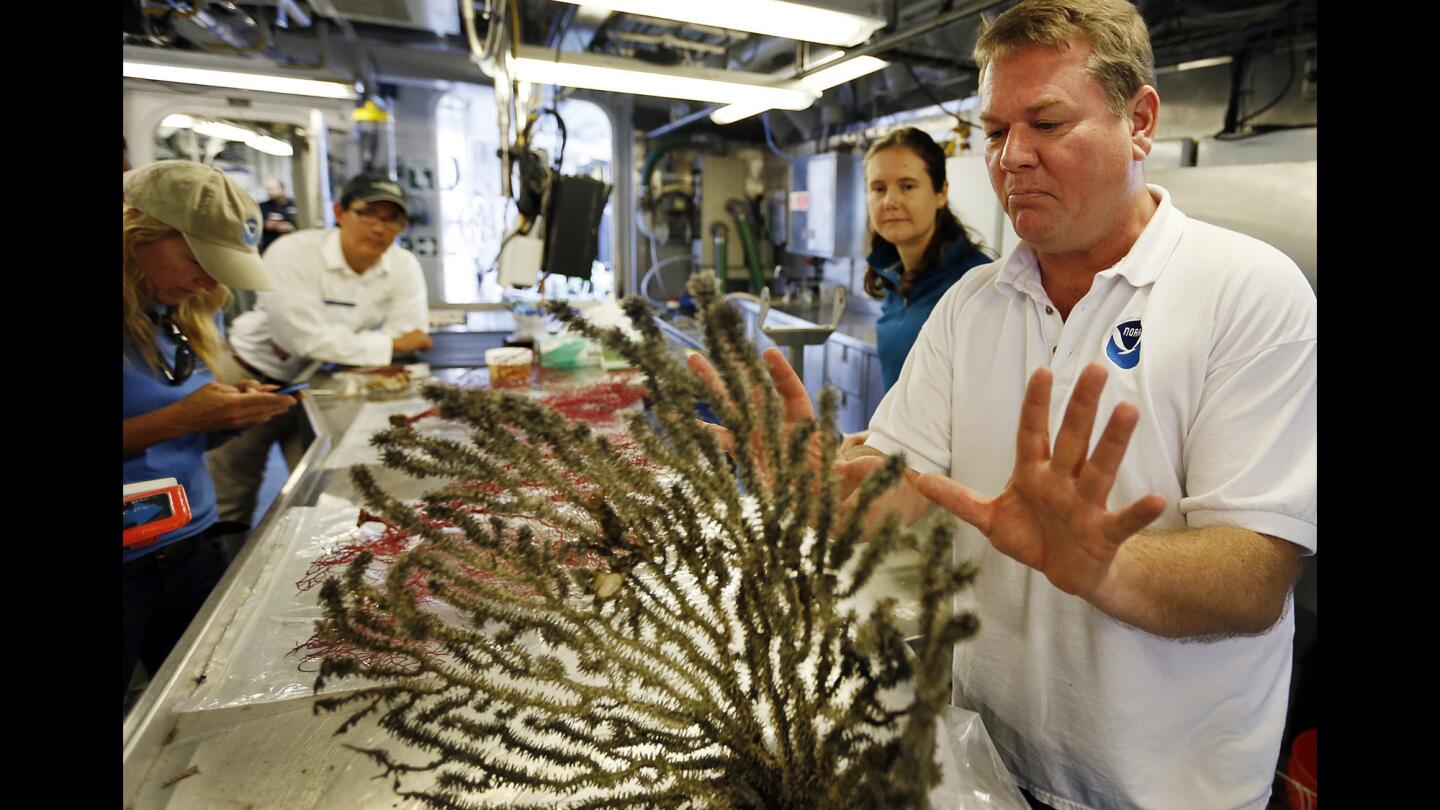
NOAA scientist Peter Etnoyer shows a delicate Acanthogorgia coral . (Al Seib / Los Angeles Times)
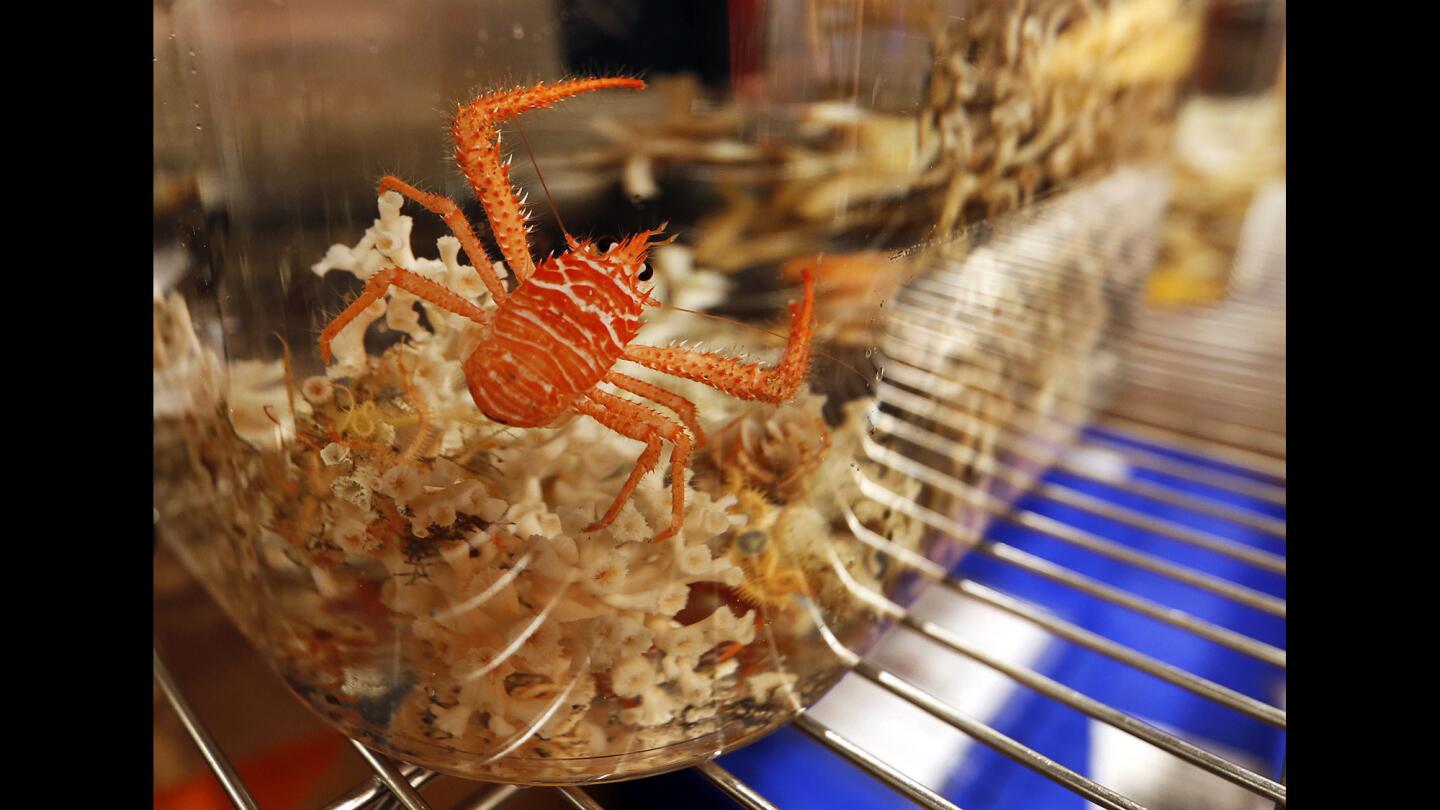
This marine creature was collected along with coral samples. (Al Seib / Los Angeles Times)
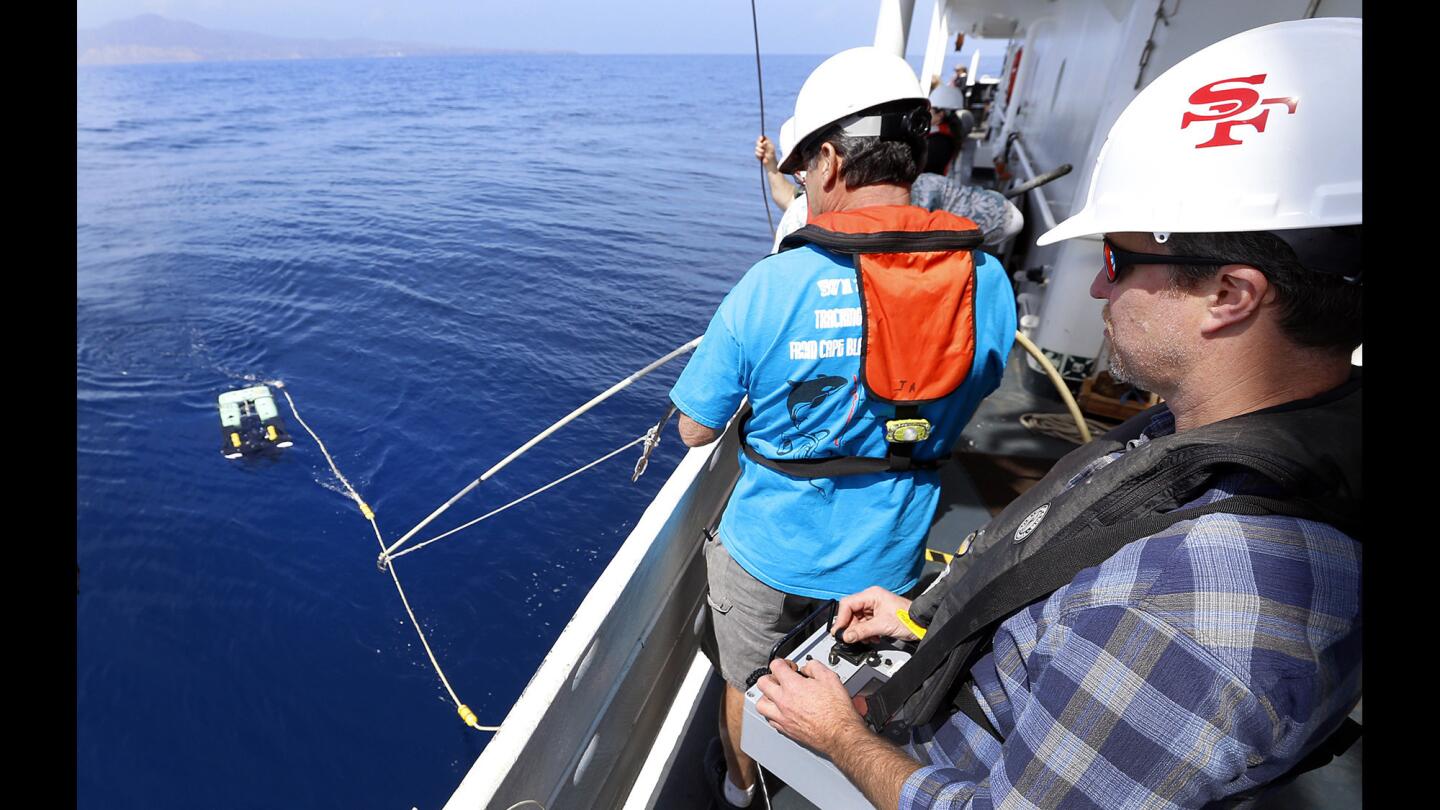
Andy Lauermann, right, with Marine Applied Research and Exploration, pilots the remotely operated vehicle back alongside the Bell M. Shimada for retrieval. (Al Seib / Los Angeles Times)
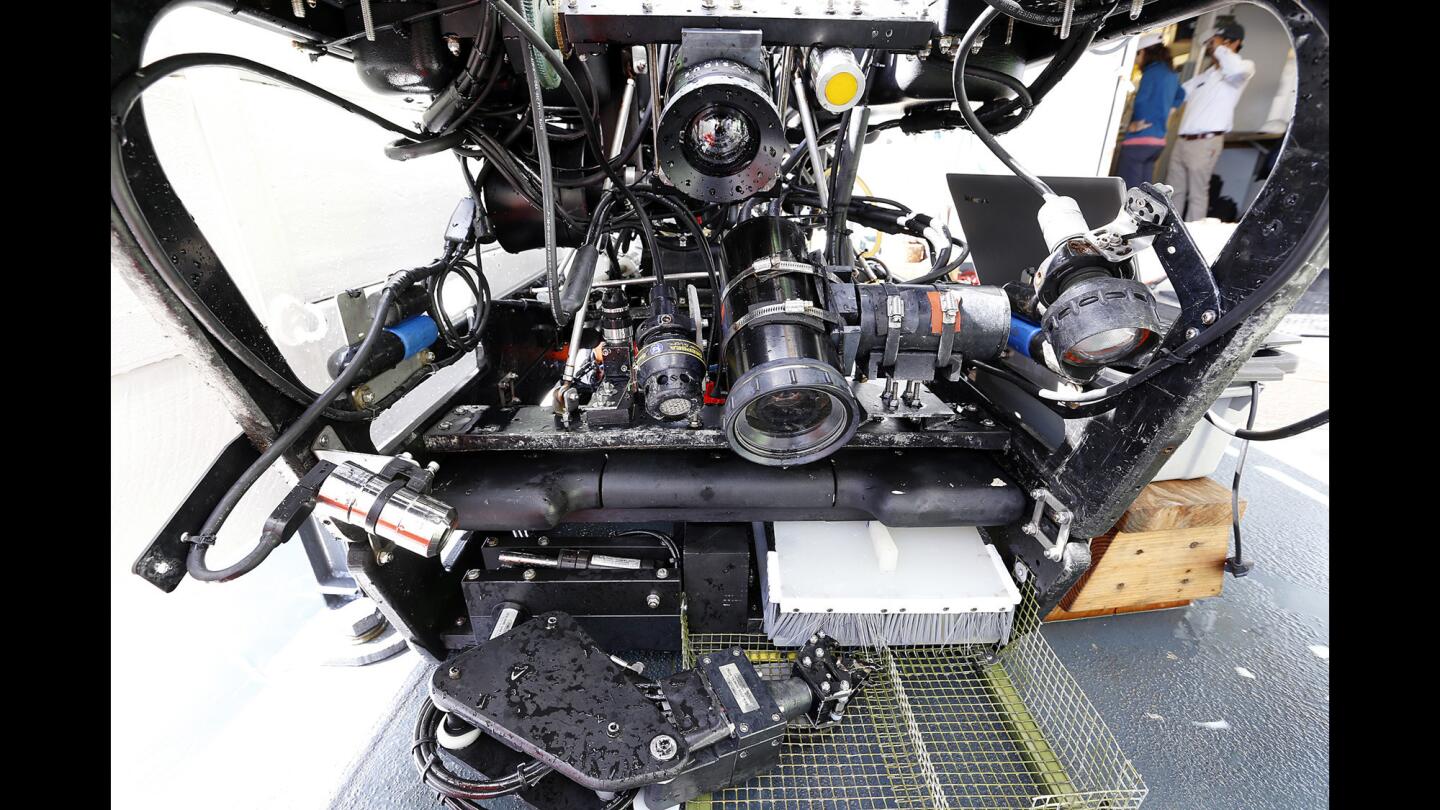
The remotely operated vehicle is equipped with high-definition cameras and a multifunctional manipulator arm used to collect samples. (Al Seib / Los Angeles Times)
Advertisement
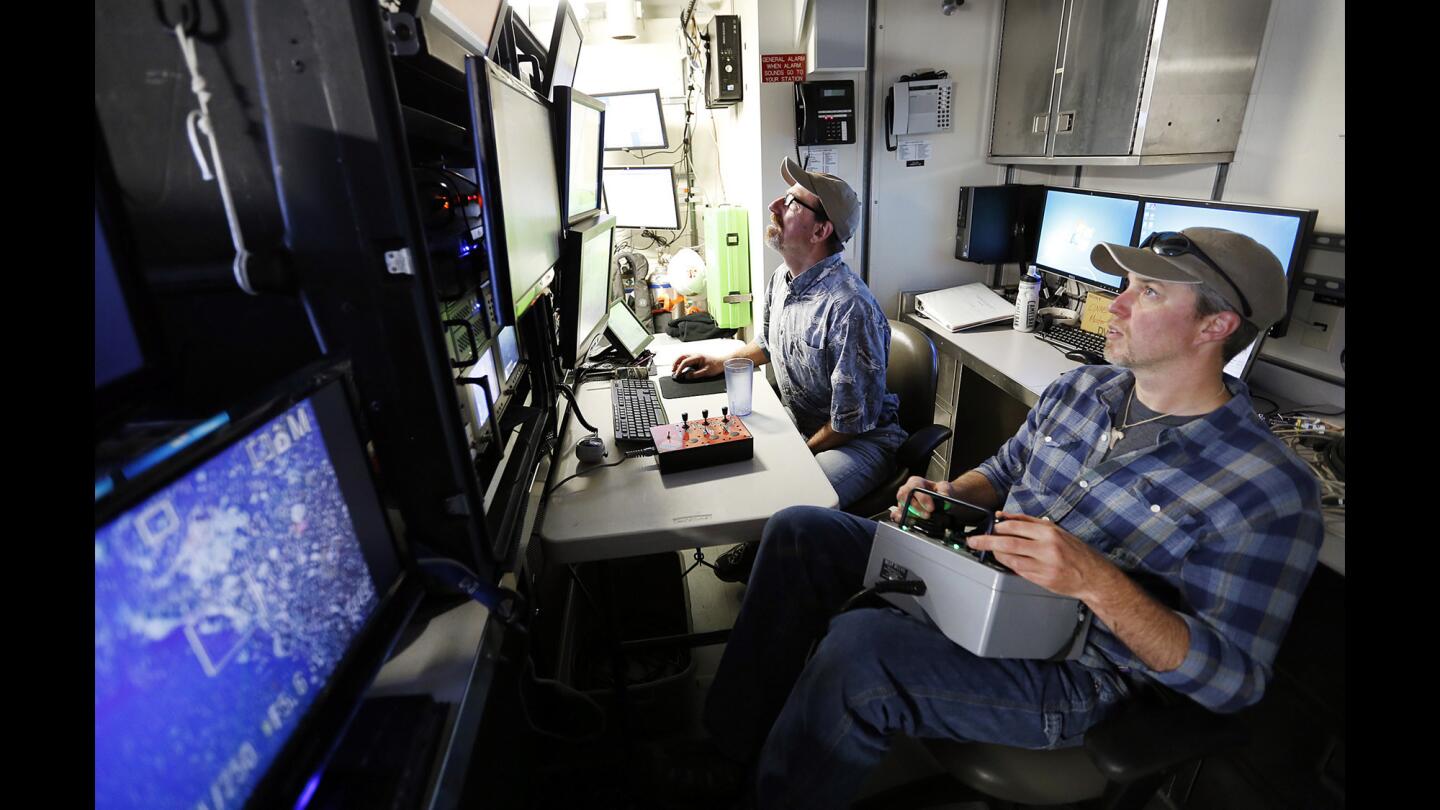
Dirk Rosen, left, and Andy Lauermann control the ROV from a command center aboard the Bell M. Shimada. (Al Seib / Los Angeles Times)
